As an experienced fishkeeper, I can tell you that one of the most exciting things you can do is breed successfully from your fish. But where do you start? There’s so much misinformation out there online that it can be a minefield for newbies to fish breeding.
Experts hope to steer the aquarium fish trade away from taking specimens from the wild environment. Wild fish are often caught with poisons that can damage coral ecosystems and in some cases, numbers are becoming seriously depleted. So, the more successful commercial and home breeding operations are, the better it is for our wild fish.
This article discusses the tenworst breeding tips that seasoned aquarium fish breeders have ever heard. We also explain how to go about breeding aquarium fish the right way!
Key Takeaways
- Sustainable fishkeeping is promoted by successful home breeding, which lessens the reliance on wild-caught fish, helping to protect natural habitats and fish stocks.
- Many popular but misguided breeding tips can lead to negative results, such as poor fry survival rates and unhealthy breeding conditions.
- Expert breeding advice emphasizes the importance of controlled environmental conditions, correct feeding strategies, and avoidance of stress-inducing practices for successful reproduction and fry rearing.
Just Let Them Do Their Thing!
Unfortunately, many amateur breeders recommend allowing nature to take its course and letting the fish do their thing without human help. That rather laissez-faire attitude towards breeding can lead to overcrowding, inbreeding, and neglect of proper care for the fry.
Add More Fish for Better Chances

When setting up a spawning tank, you should include breeding pairs of male and female fish that are in excellent health and spawning condition.
Some people recommend adding a few more fish to your breeding tank, mistakenly thinking that will increase the chance of the fish breeding. However, that approach is counterproductive, as introducing more fish into an established breeding tank can stress the breeding pair and disrupt their breeding behaviors.
Skip Water Changes During Spawning
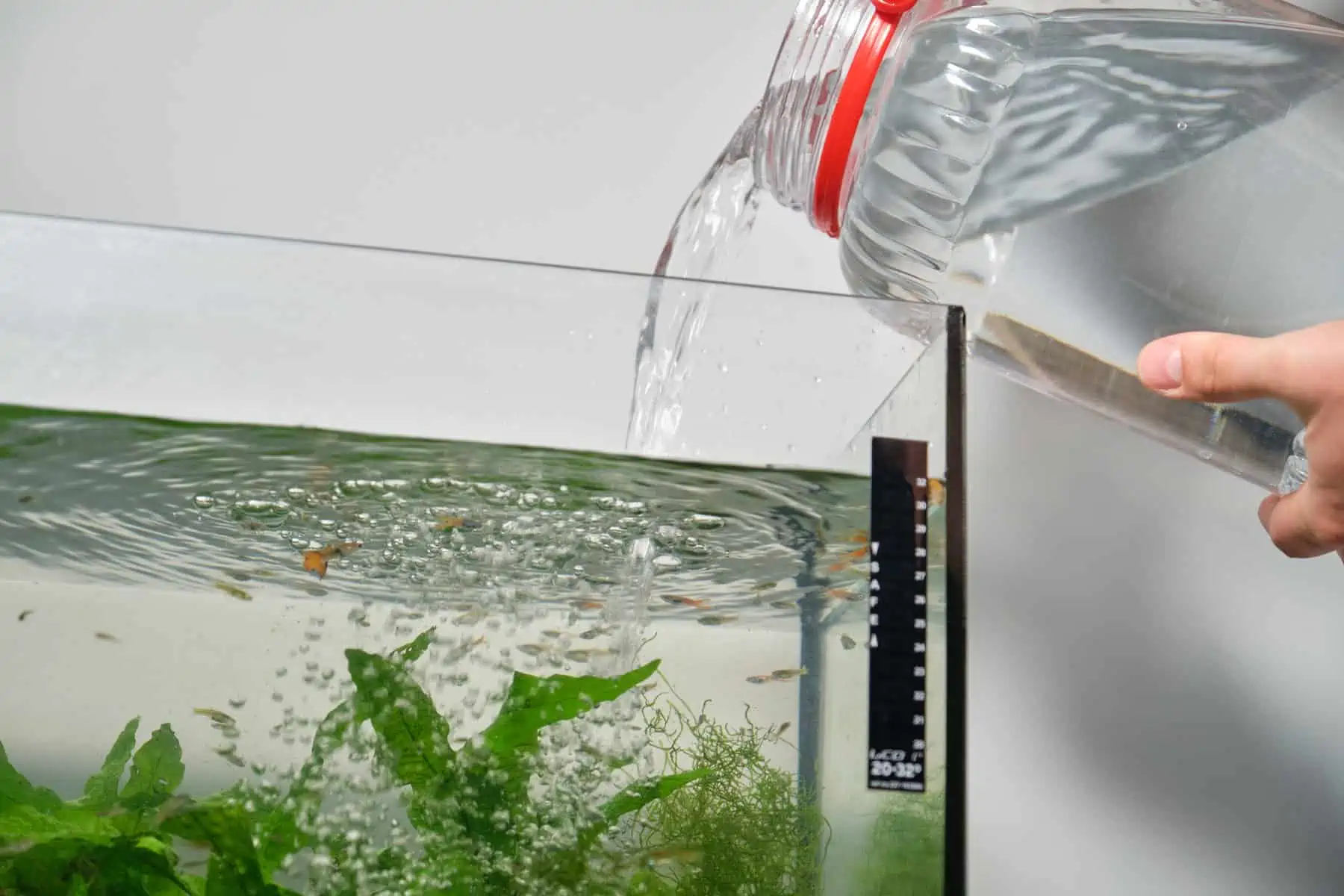
This terrible tip goes hand-in-hand with the recommendation to allow nature to take its course.
Poor water quality will result if you don’t carry out water changes in your spawning tank. When that happens, the fish might not breed at all, and if they do, their fry won’t be healthy and will likely die pretty quickly.
Ideally, you should change around 20% of the breeding tank water daily, vacuuming away any waste during the process. That prevents fish waste and uneaten food from accumulating in the tank, producing ammonia as it decomposes, potentially poisoning your fish.
Feed Only Live Foods

Most fish living in the wild environment eat a varied diet that includes a small amount of algae and plant material. Although feeding your fish live food is undoubtedly good for them, relying solely on those foods can lead to nutritional deficiencies.
Throughout the breeding process and in the build-up to it, feeding your fish a balanced diet of live, frozen, and high-quality dry foods is essential.
Handle the Eggs and Fry Frequently
Some misguided breeders suggest handling the eggs and fry as often as possible. However, excessive handling of eggs or fry causes stress and increases the risk of disease transmission.
Fit a piece of very fine mesh across the tank bottom to prevent the parent fish from eating their eggs. When the eggs are laid, they drop through the mesh and out of the parents’ reach.
However, that approach only works with egg-scattering fish species. If the eggs are deposited on plant leaves or spawning mops, the best thing to do is remove the parent fish so the eggs can develop and hatch safely. In fact, in most cases, it’s best to return the parents to your main tank, leaving the fry to develop and grow in peace.
Of course, there are exceptions, and some fish, such as Kribensis, make very good parents, guarding their young until they can fend for themselves. In that case, you should leave the parents in the spawning tank with their babies.
Keep the Breeding Tank in Total Darkness
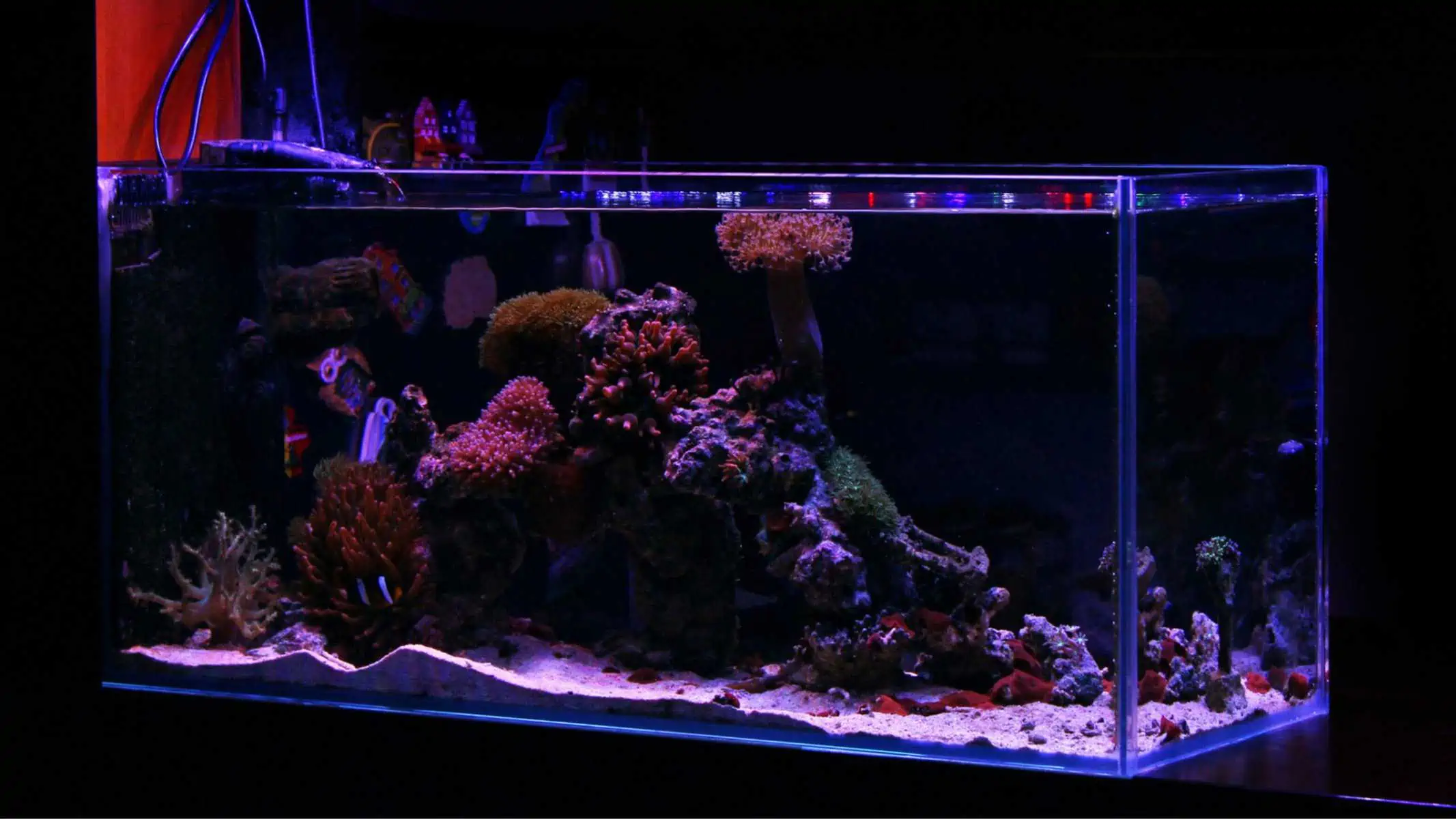
Some hobbyists recommend keeping the breeding tank in total darkness to encourage spawning. However, fish need a clear day-night cycle for natural behavior, including breeding.
In the wild, lengthening days and increasing water temperatures tell fish that it’s time to spawn. If you deprive them of light for long periods, the fish won’t breed and could even die.
Use Preventative Medication
Some breeders like to use medications prophylactically to prevent diseases from affecting their fish. However, administering medications without a clear indication can disrupt the delicate balance of the aquarium ecosystem and harm both the breeding pair and their offspring.
Ideally, your fish will be in prime condition before you attempt to breed from them. Provided your spawning tank is clean and correctly set up, you should have no issues with diseases, so preventative medication is not necessary.
Ignore Tank Size Requirements
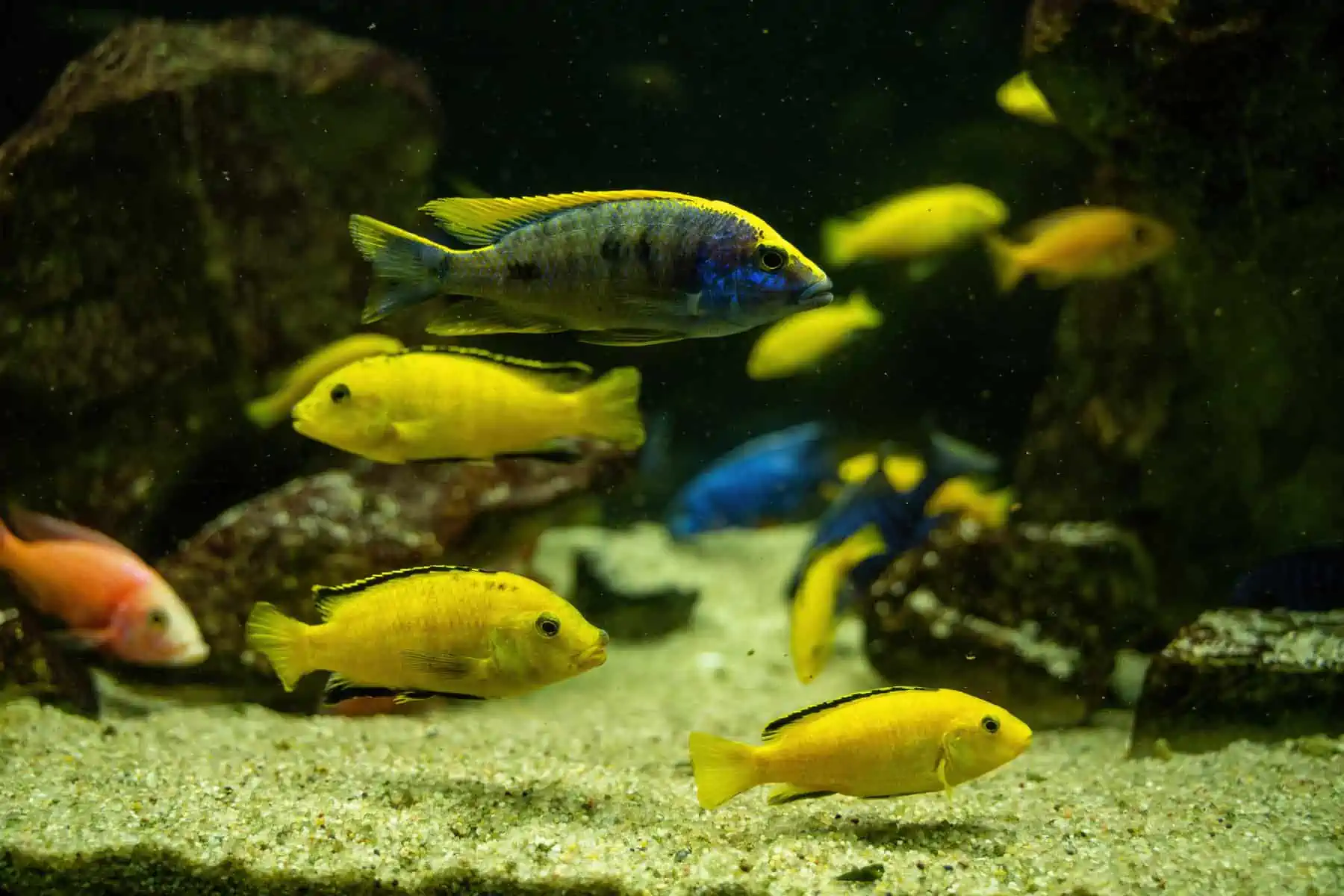
You’ll read many online articles that recommend using a small tank for breeding purposes.
However, breeding pairs need plenty of space not only for spawning but also to accommodate territorial behaviors and allow proper care of the offspring. If the tank is too small, the fish could become stressed, which could lead to aggression and possible injuries. Also, in some cases, a stressed-out parent will eat its eggs and fry; always provide your fish with a large breeding tank.
Mix Different Species for Hybrid Vigor
Hybrid vigor, also known as heterosis, refers to the phenomenon where the offspring of genetically diverse parents show improved growth, health, a longer lifespan, or other desirable characteristics.
Hybrid vigor arises due to the combination of favorable alleles from each parent, leading to increased genetic diversity and overall fitness in the offspring. That’s why crossbreed dogs are currently so popular. Agricultural breeding programs also use hybrid vigor, crossing different strains of wheat, barley, and the like.
However, when it comes to fish breeding, hybridization often leads to unpredictable results and can produce genetically weak offspring prone to health issues. For that reason, breeding should be done within the same fish species whenever possible.
Don’t Worry About Water Parameters

Ignoring water parameters such as pH, temperature, and hardness can lead to unsuccessful breeding attempts or health issues in the offspring and parents.
For that reason, it’s crucial to maintain stable and appropriate water conditions. Ideally, the water parameters should match those in the main display tank, although the water temperature can be a few degrees warmer, as that often triggers spawning.
For example, Indonesian ornamental fish breeder Tom Bowling tried to breed Blotched Anthias for eight months and failed dismally.
Thinking he was doing the right thing, Bowling kept the fish in cool water, attempting to replicate the temperatures these deep-water fish are typically in in their natural habitat. It was only when his air conditioning unit broke, and the water temperature increased overnight by a few degrees, that he realized his mistake. In the warmer water, the fish immediately began spawning!
Top Fish Breeding Tips!
Now you know how not to do it, here are some top breeders’ tips for successful fish breeding.
When’s the Best Time to Breed Fish?
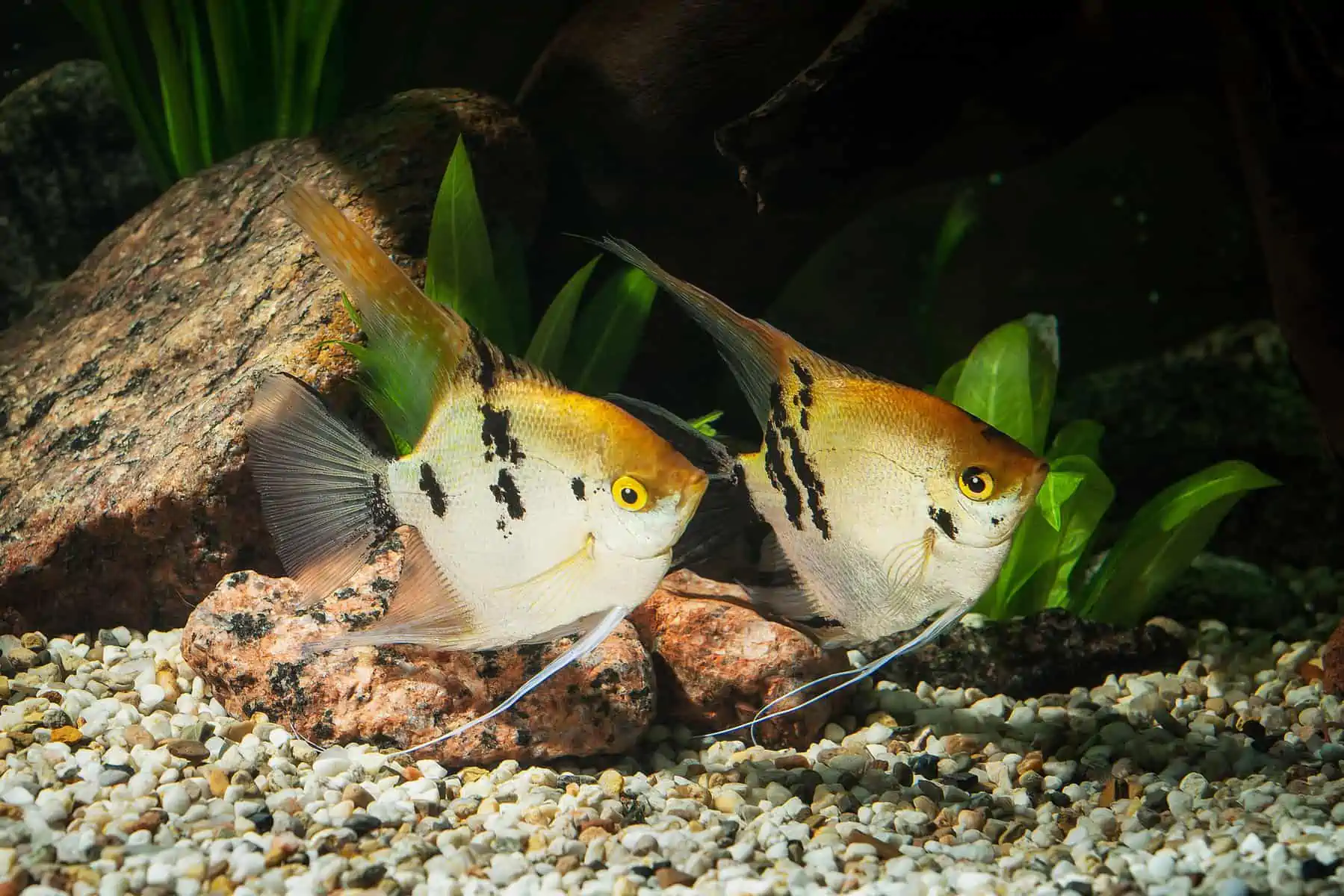
As we mentioned earlier, most fish species breed in the spring, when the daylight lengthens and the water gets warmer.
You can mimic this in your home fish tank at any time by increasing the water temperature slightly, leaving the lights on for a little longer each day, and performing more frequent water changes.
Provide both male and female fish with high-protein food and create an environment as close to their natural one as possible, and you will condition the fish to spawn. Different fish species have different egg-laying manners, so you must research the species carefully and provide them with suitable breeding surfaces, plant types, and aquarium setups.
How To Choose a Breeding Pair of Fish?
On tropical fish farms in Asia and Florida, fish are encouraged to spawn in spring, usually indoors. The fry is transferred to outdoor ponds to grow before being shipped to aquarium stores. There’s plenty of live food in the ponds for the youngsters to eat from the start, and they are then offered pellets to promote further healthy growth. The young fish will be well-developed and mature enough to breed by the fall.
Start by choosing fish with no obvious physical deformities, of a good size, and with the best colors.
How to Condition Your Fish for Breeding?
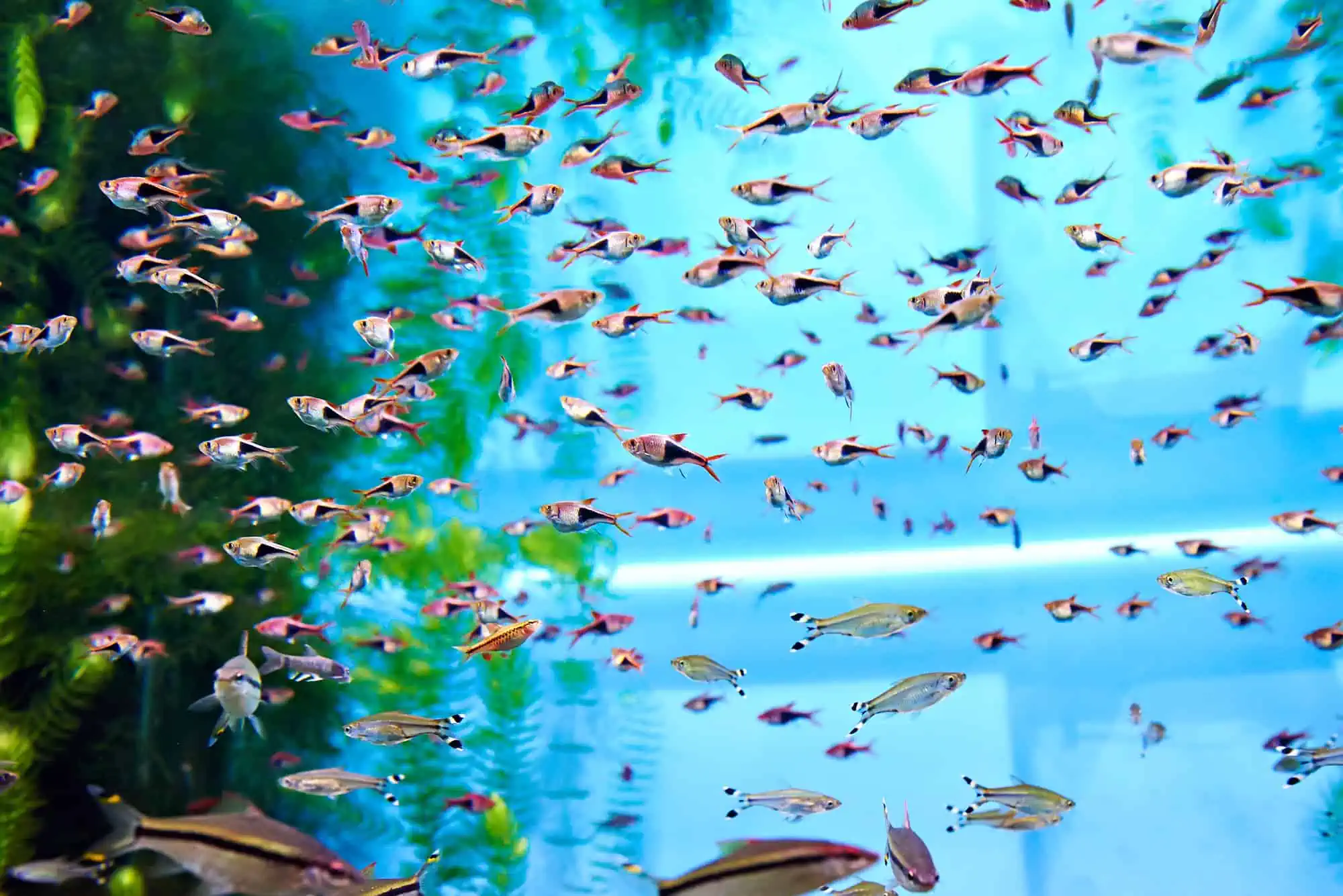
Before you can attempt to breed from your fish, you need to bring them into spawning condition.
- Give the fish plenty of high-protein food, feeding them more often than you would usually feed your community aquarium fish, ideally several times every day. Live brine shrimp or frozen meaty foods are ideal for this.
- Provide the breeding pair with their own dedicated spawning tank, set up with the appropriate substrate or decor, depending on the species’ method of egg-laying or livebearing.
- Most breeders recommend keeping male and female fish separate for a few weeks to increase their likelihood of spawning once they get together. To do that, you can use a glass partition in the tank so that the fish can fully view each other.
- Increase the water temperature in the breeding tank by a few degrees to around 78o to 82o degrees F, depending on the species. The idea is to have the temperature slightly warmer than it is in your community tank.
Once you’ve done all those things, the female fish will become loaded with eggs or roe. Throughout the conditioning period, you must also keep the pH, water hardness, and alkalinity in line with what’s required by the species for spawning.
How To Produce Infusoria?
One of the biggest challenges facing novice fish breeders is how to feed the fry. You need a food source small enough for the babies to eat, and most aquarists and fish breeders use infusoria as their fry’s first food.
Infusoria are tiny organisms, including bacteria, algae, crustaceans, and protozoa in the water that the little fry can eat.
Growing infusoria is remarkably simple. Just place a lettuce leaf in your breeding tank as soon as spawning is complete. As the leaf gradually decomposes, enough infusoria are created to provide the fry with food for at least their first week. You can then remove the old leaf and replace it with a new one.
Once the young fish have grown enough, you can feed them finely powdered commercially prepared fry food or paste preparations, like Liquifry. After another couple of weeks, you can offer your fish frozen or live foods, such as bloodworms, daphnia, and brine shrimp.
What Size Spawning Tank Do You Need?
Remember, it’s not good practice to keep your breeding fish in a very small tank, as stress can disrupt the spawning process and stress your fish.
Most beginner fish species will do fine in a 10-gallon breeding tank, although larger species will need more spacious accommodation. Equip your spawning tank with a heater, an air pump, and a sponge filter that won’t trap the tiny fry.
Final Thoughts
There are plenty of terrible fish breeding tips out there on the net that you should ignore. In fact, rather than helping the novice breeder to succeed, much of that advice will guarantee that your fish won’t spawn at all!
For breeding success, condition your breeding pairs before adding them to your spawning tank by feeding them a high-quality diet for a few weeks beforehand. Keep your fish in a spacious breeding tank, carry out daily water changes to keep the environment clean and hygienic, and elevate temperature by a few degrees to trigger spawning.
Most fish species will eat their eggs and fry, so remember to remove the parents once the eggs have been laid.


